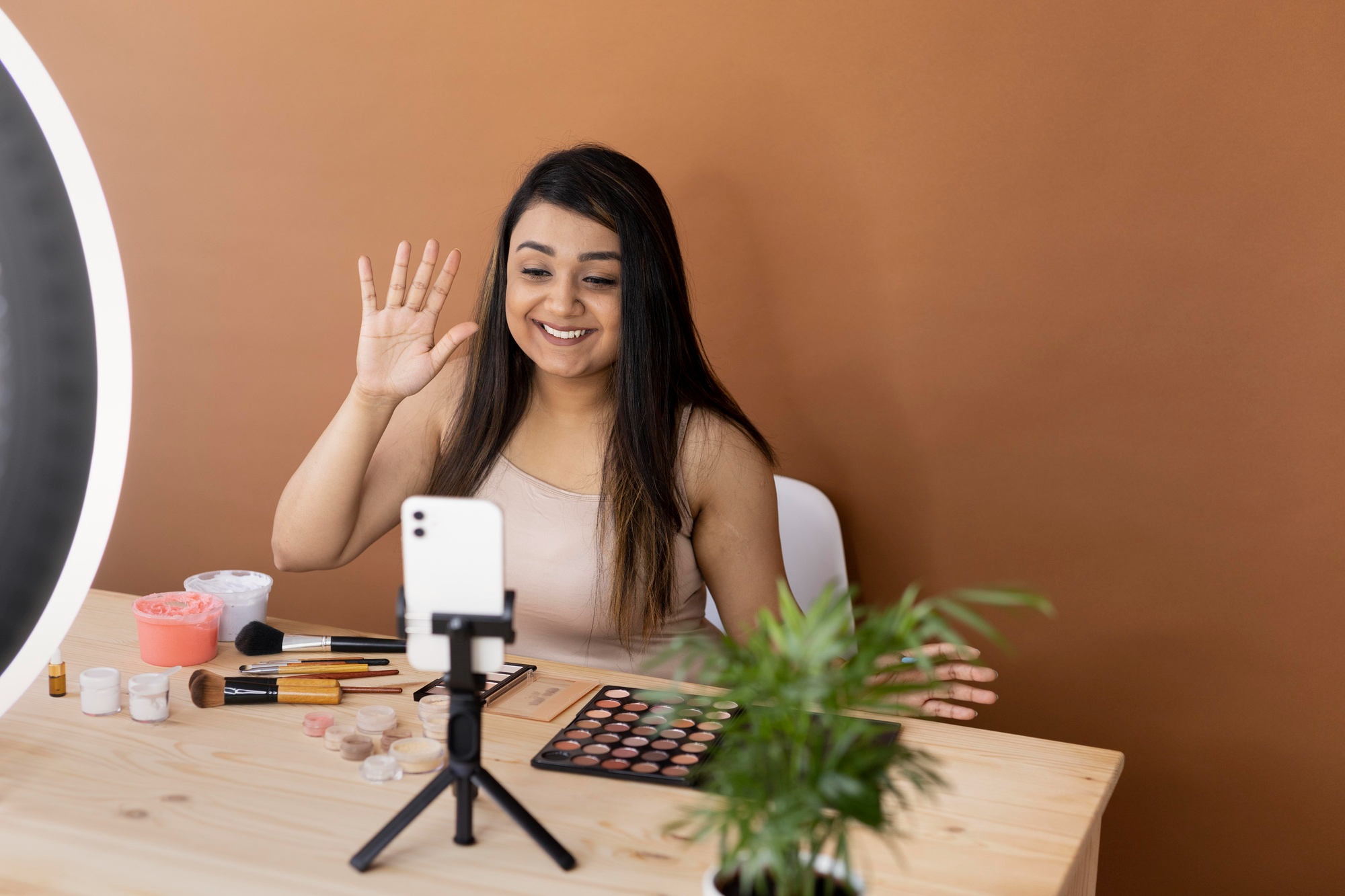
People typically look for reassurance and security during times of uncertainty since it can be hard to anticipate what’s going to happen next month, much less next year. With that in mind, brands and agencies can look to trends and predictions based on objective data that provide some form of predictability of what they can safely expect in the year to come.
Nuffnang, which is one of Malaysia’s leading digital growth and influencer marketing companies, recently shared with Marketing Magazine relevant trends and information to help brands and businesses make insightful and well-informed decisions to further stretch their marketing ROI (return-of-investment).
At its recent MRW/TDY event, Nuffnang provided insights into upcoming trends to give attendees a better idea of what to expect in 2024. For the benefit of the industry, Marketing Magazine has condensed key learnings into a comprehensive guide for influencer marketing in 2024.
1. AI has a place in Influencer Marketing and Content Creation.
With the rise of various AI platforms, AI will inevitably find its way into influencer and content marketing. Even Bill Gates has said that AI will “change the way people work, learn, travel, get health care, and communicate with each other”, and that “businesses will distinguish themselves by how well they use it.”
While AI won’t replace the human elements of influencer and content marketing, it can supercharge the content creation process exponentially. With ChatGPT and other generative AI platforms available, influencers and marketers can use it to get our creative juices flowing in the campaign curation and content creation process.
However, it’s also important to acknowledge that an over-reliance on AI can also be counterproductive; potentially limiting our creativity in pushing the boundaries to do what has never been done before.

2. Live Commerce will continue to grow and remain competitive in the Malaysian market.
In line with the forecast of Live Commerce being set to continue growing and expanding in the global marketing scene, TikTok Shop is aggressively expanding in Southeast Asia. In 2022 alone, TikTok Shop expanded to six Southeast Asian countries — Singapore, Malaysia, Indonesia, the Philippines, Vietnam and Thailand.
This is further supported as product and brand discovery is also evolving, with more Gen Zs saying they discover products on social media than they do on search engines and millennials trailing closely behind.
The growth of TikTok Shop has raised an alert to major competitors in the e-Commerce and Live Commerce industry because while TikTok Shop only has a fraction of GMV compared to other competitors there is a massive upward growth trend as both large and small users use the platform to reach new customers.
It’s clear to see from the success of TikTok Shop along with Shopee and Lazada’s live commerce efforts that growth in this area will not slow down any time soon. Brands need to consider expanding their live commerce efforts and give it a dedicated place in their marketing strategies.
3. Affiliate Marketing is coming up as a potential route to financial success for creators and influencers.
Affiliate marketing is an interesting conundrum. On one hand, what’s not to love about a performance-based marketing effort? As a creator, you do more, you earn more. As a brand, you add on a revenue channel and perhaps it is the most attributional thing because you can track the performance down individually.
But on the other hand, it’s also met with quite a bit of resistance with various factors coming into play:
- The sellability of the product and reputation of both the brand and creator,
- The commission/compensation scheme itself,
- Content authenticity and audience trust, and more.
There does seem to be a consensus that affiliate marketing can be lucrative and successful for both brands and influencers, but there needs to be some parameters set in place to ensure success:
- Brands need to look at affiliate marketing differently from influencer marketing campaigns because of the commercials involved. Affiliate Marketing seems to feel more like a business compared to regular campaigns.
- A platform like Commissions Factory is needed for tracking and attribution.
- Brand and influencer fit considerations are paramount because trust must be established on both sides for the working relationship to go smoothly.
- Longer-term engagements are necessary to see fruitful results for both brands and influencers.
4. B2B influencer marketing is on the rise.
Because of such a saturated B2C (Business to Consumer) influencer marketing space, there seems to be a gap in exploring the possibilities of B2B (Business to Business) influencer marketing and its potential impact on brands in Malaysia.
Looking westward, brands in the US are seeing an upward trend in their adoption of B2B influencer marketing, with 74% of B2B marketers seeing the potential of influencer marketing to drive business benefits. However, only 19% of them are running systematic influencer marketing programs.
Over in Asia, we learn based on interviews of 550 Chief Marketing Officers (CMOs) across 11 markets done by Ogilvy Asia that 75% of B2B marketers are now utilizing B2B influencer marketing, and 93% of those are planning to increase influencer activity. However, despite the growth we see globally, the study also shows that B2B influencer marketing’s potential is still severely underutilized and remains unrealised.
Emily Poon, Ogilvy’s President of PR & Influence in Asia also states, “With 66% of CMOs in Asia saying they find B2B influencers more impactful than their usual marketing activities, a B2B influencer marketing strategy has become a must-have for brands and businesses.” It’s clear to see that it’s time to seriously consider how B2B influencer marketing can play a role in building brand trust and impact for brands in Malaysia.

5. User-Generated Content is set to grow in popularity among content creators.
Oftentimes the term User-Generated Content (UGC) may be confused with its close sibling, influencer marketing content. However, the key difference lies in this: UGC is accurately described as raw, real and unbiased content created by a brand’s real consumers (with brands having little to no creative control over the content); whereas influencer marketing content leans more towards a curated advertising strategy where brands specifically collaborate with influencers who can create content to market their products or services.
Nikita Panchigar, Digital Marketing & Social Media Specialist coins the differences as so: “UGC celebrates the power of everyday experiences, while Influencer Marketing taps into the influence of captivating personalities.”
UGC and influencer marketing can both bring unique benefits to brands and businesses as a whole, but UGC has been said to be the epitome of authenticity in the digital world. UGC brings a host of unique benefits to brands by promoting audience engagement, boosting conversions, improving SEO, building brand trust, and more. As authenticity will continue to be valued in 2024, there is value in exploring UGC for your brand.
6. Niche platforms are coming on strong.
Xiaohongshu (XHS) and Lemon8 are platforms we keep hearing being thrown about. But are these platforms actually worth paying attention to?
The number of consumers using XHS daily has risen faster than WeChat or Douyin since 2021. Its popularity has also ballooned among China’s Gen Z, with the number saying they use it daily growing 25% in this time frame for content on fashion, films/cinema, fitness & exercise, beauty/cosmetics, and travel.
XHS is now the go-to app for lifestyle content and shopping, and it’s a great channel for brands operating in recovering sectors like travel. (GWI 2023 Social Media Trends Report)
Before brands or agencies consider incorporating XHS or Lemon8 into their marketing strategies, it’s important to understand the key differences between these platforms and those we already know like Instagram and TikTok. Then and only then, brands can explore experimenting with ways they can build a presence on XHS and Lemon8.
Influencers also need to explore these platforms and grow comfortable with being early adopters. This can be what sets you apart from other influencers or content creators. You just need to find a niche that best suits you on each platform.
Some resources for further reading for marketers:
- Xiaohongshu and Lemon8: Everything To Know About These Trending Social Media Apps
- Lemon8 Vs. Tiktok: Story Behind The App Everyone’s Talking About

7. Greater emphasis on inclusivity and diversity in influencer marketing.
A 2020 survey from the Influencer Marketing Hub revealed that 62% of consumers believe influencers should represent a broad spectrum of backgrounds. This belief holds even more weight in Malaysia; a country made up of a melting pot of cultures and ethnicities.Your influencer pool may be impacted by the consideration of Malaysian demographics, relevant topics and influencer specializations, but representation shouldn’t suffer as a result. With Nuffnang’s Influencer Scorecard, there is a way to consider influencer selections in a more objective light.
But there also needs to be a realisation from all parties involved that influencer marketing is more than just engaging an influencer from one ethnicity to reach a mass of other similar ethnicities. In a culture like Malaysia’s, relatability and reach can and should transcend our skin colour and ethnicity.
56% of Gen Z or millennials say they follow influencers who have the same beliefs or values as them. So, it’s going to take more than just ethnicity for social media consumers to truly resonate with the influencers they follow.
8. Authenticity will continue to be valued by consumers.
Authenticity has always been a buzzword in influencer marketing, but even more so in recent years. With such a saturated social media space, those who consume content online are getting even more particular with curating their feeds with the influencers they most want to follow.
A big portion of why audiences follow influencers in the first place is an authentic portrayal of themselves, whether that looks like genuine expressions of their emotions or current headspace, or comedic and relatable skits. This is what makes each influencer unique and relatable.
Brands who wish to bring this same authenticity in any of their influencer marketing content need to be content (ahem) allowing influencers and content creators some measure of creative freedom. So how can a brand lean into authenticity without overstepping? When do you present your best self and when do you open yourself to a harsher light?
Rob Gaige, Director of Global Insights at Reddit advises brands to 1) stick to a value or belief they are most passionate about, 2) take time to listen to their community of consumers, and 3) resist the temptation to bring everything back to the brand or its proof points.
All in all, the TMRW/TDY event provided me with valuable insights into the field, even though I’m not an influencer or content creator. It made me consider the intriguing aspects of being in this profession, including the potential benefits of affiliate marketing for income. However, I realise that the constant content creation grind and the responsibilities they hold as someone with influence can be very challenging. Hats off and salutes to everyone, especially the speakers for sharing their views and thoughts about all these topics that are now starting to become familiar to me!
Interested in exploring how to incorporate these trends into your marketing strategy in 2024? Get in touch with us at [email protected].
This article was originally posted on Marketing Magazine.
